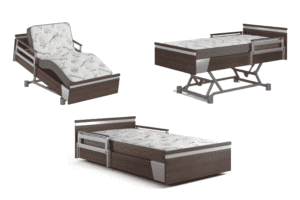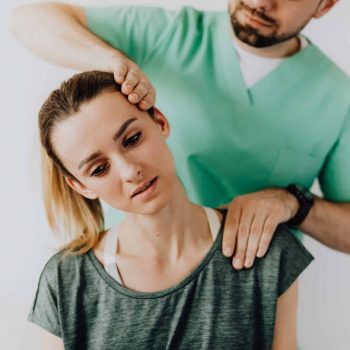

SonderCare Learning Center
In order to mitigate the risk to patients, safety culture is a personal responsibility to any and every patient in the home hospital, to the outside services that participate and to every caregiver and family member involved. It means doing everything in our power to create an environment that is safe, sanitary and oriented on the comfort of the patient.
Some of it has to do with setting best practises such as: hand washing; succinct, detailed and competent interaction between caregivers; safe care procedures; understanding of medications; and intimately knowing the needs of the patient. But patient safety extends much further than that. Read on to learn more and answer the question, What Exactly Is Patient Safety?
Patient safety, in simple terms, is the reduction of risk to patients during healthcare. According to a study on ResearchGate, professionals may better define this as applying the principles of safety science to patient care. On paper, it seems simple enough. In reality, it’s not as easy to put into practice. And remember, when a patient is taken care of at home, the home care space becomes the hospital in most cases. That means that the same seriousness and organization of efforts around a patient’s care should also apply to home care.
According to the World Health Organization (WHO), patient safety is the “absence of preventable harm.” What constitutes preventable harm may be subjective, which makes the topic a difficult one.
Preventable harm seems to be a clear case if an intern doctor administers the incorrect medication to a patient. The waters, however, muddy on closer inspection. Was the doctor adequately supervised? Were they working long hours?
Should the supervising doctor and hospital administrators also be held accountable? The absence of preventable harm is a broad concept with far-reaching effects. This is why patient safety is a complicated topic to cover.
No one should have to confront the concept of blame when it comes to a loved one’s recovery. However, in the official discussion of patient safety procedures that discussion often comes up. Patient safety shifts the focus from looking at what happened in a health care situation that could have been executed better to creating a procedure that prevents similar incidents in the future. According to WHO training on the topic, focusing on blaming or punishing professionals for errors is counter-productive. The same has to apply to caregivers and family members involved in direct hospital style care at home.
Assigning the blame to one person leads to a danger of systemic issues going unnoticed. Good patient safety science makes no such assumptions but, instead, investigates the matter more thoroughly. This is especially true in caring for a family member. Trying to do things like wound care or bathroom visits in a homecare scenario for the first time is very challenging and emotional for someone with limited experience. Don’t give up! Learn more about what’s needed, perfect your approach and take a scientific approach to home healthcare.
The concept is the foundation of high-quality healthcare and deals with the potential adverse outcomes of care. Proper risk-prevention strategies entail the use of checks and balances to prevent adverse effects.
A few centuries ago, it was easy to pretend to be a doctor. The lack of standardized care made it simple for random people to make an attempt at providing medical advice. In an attempt to limit the activities of these fraudsters, the legitimate medical guilds turned to litigation and major systemic changes.
Over time, regulators responded by setting standards for patient care. Care institutions today set their stringent standards to remain competitive. Those who are in their care benefit. You can take the same standards into a home healthcare environment.
Nurses are an integral part of the system since they provide front-line support and coordination. Protocols provide guidelines for nurses and other healthcare professionals. The principle extends beyond the role of clinicians and also applies to the realm of administrators, as well as all stakeholders that deal with patient care and finally, those involved in home healthcare.
Care starts with a commitment to the best interests of the patient. Steps that facilities may take include the following:
Having the right qualifications is a good start, but the staff must also have the correct attitude. Nursing is a calling and shouldn’t be “just another job.” Conducting psychometric testing on nurses and any other professionals joining the team may prove useful in selecting the correct candidates. Doing a deep dive into homecare facilities resources, history and patient reviews is a good idea before hiring a team to compliment your home healthcare setup.
By providing home care staff and other related providers with the best resources everyone can be given the tools for success. For example, learning about the needs of the patient and finding out they suffer from poor sleeping and uncomfortable lounging during the day can lead to securing the proper resources which in turn benefit the entire team. This is common feedback for SonderCare hospital beds and mattresses which can improve patient comfort from day one. Beds with adjustable rails and fully-electric positioning make it more effective to tend to patients.
Providing caregivers with great resources often goes beyond the physical tools that they need. Providing them with sufficient time off, fair wages, and psychological support are also essential.
The concept is the foundation of high-quality healthcare and deals with the potential adverse outcomes of care. Proper risk-prevention strategies entail the use of checks and balances to prevent adverse effects.
A few centuries ago, it was easy to pretend to be a doctor. The lack of standardized care made it simple for random people to make an attempt at providing medical advice. In an attempt to limit the activities of these fraudsters, the legitimate medical guilds turned to litigation and major systemic changes.
Over time, regulators responded by setting standards for patient care. Care institutions today set their stringent standards to remain competitive. Those who are in their care benefit. You can take the same standards into a home healthcare environment.
Those supervising the home hospital care plan in your home may refer to the WHO Performance Assessment Tool for Quality Improvement in Hospitals and the OHSA Assessment Tool for guidance. You don’t have to exactly implement the procedures that go on in hospitals especially with limited resources. But skimming those crucial documents can give you some understanding of the intricacies and make it easier to talk to your physician or other medical authorities.
The process of creating a response framework entails a set of guidelines to follow when dealing with patients. It will detail how:
Planners should consider several scenarios, ranging from the best case to the worst. Using tools such as the Failure Modes and Effect Analysis will assist administrators in planning the correct response.
All employees should receive extensive training on their roles and responsibilities. They must understand what the procedures are and why they are critical. Providing this training provides staff with the best chance of success.
Ensuring patient safety is a critical function of caregivers and institutions. By applying basic safety science principles, private residences, care homes and hospitals can demonstrate their commitment to the patient. As a valuable secondary bonus, they may also reduce exposure to potential liability or setbacks for patients.
In the medical field, patient safety is a system that uses methods of safety science to the aim of achieving a secure care delivery system. Patient protection is also an attribute of health care systems; it reduces the occurrence and effect of adverse outcomes and optimises their recovery.
It is important because it uses crucial and advanced safety techniques such as monitoring technology, ensures patients understand their treatment plans while checking and verifying all medical procedures. Finally, it promotes following proper sanitization procedures and promotes a team accountability and cooperation environment.
You can contact local hospitals or retirement homes, Goodwill, or Salvation Army. Churches may be a good choice as well. They may be familiar with a family who wants a hospital bed at home. Give the bed to an international agency helping people in need, hospitals and other medical centers. You can also contact the manufacturer and ask for recommendations.
Start Your Patient Safety Equipment Collection With SonderCare
Are you recently discharged from hospital, experiencing mobility issues, or in need of palliative or senior care? Enjoy a smoother recovery and get the luxury you deserve by choosing our home hospital products. Contact us today to discuss home hospital beds, mattresses, stand assist chairs and other accessories to make your home hospice perfect for a truly comfortable experience.
Are you looking for the most recent articles on patient safety and medical supplies? Browse our latest resources below and let us know if you have any questions. We’re here to support you as you embark on your road to home medical care.
Seeking The Best Care For Your Loved One?
Browse North America's Luxury
Patient Safety Equipment
Inventory